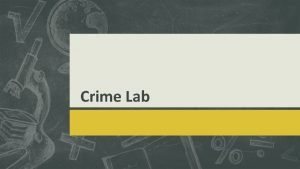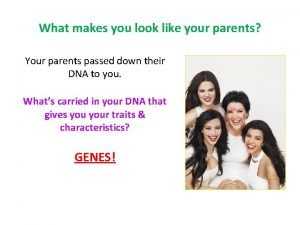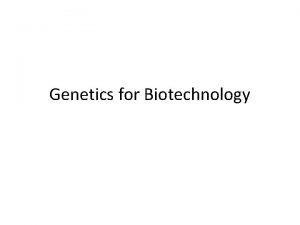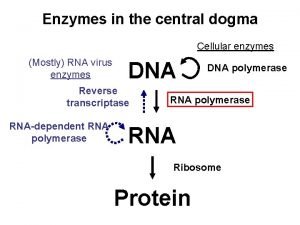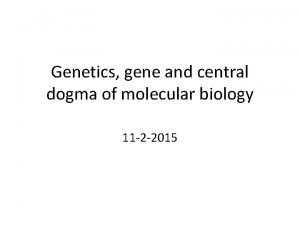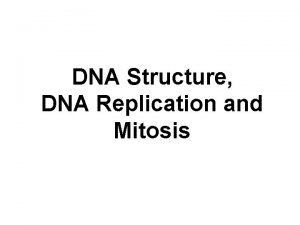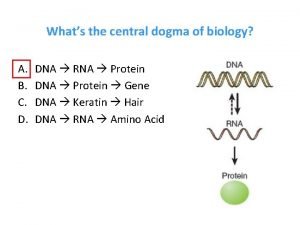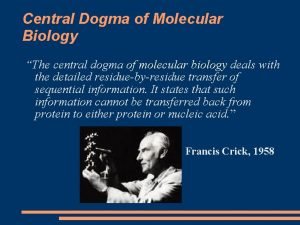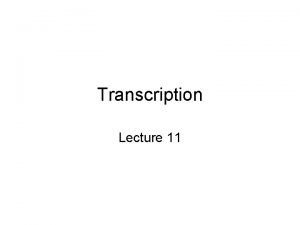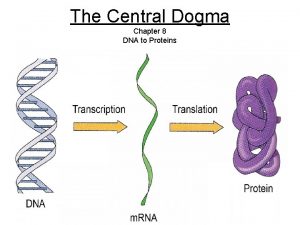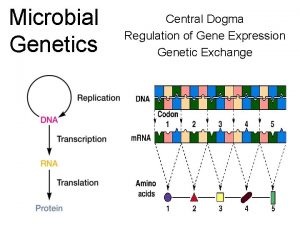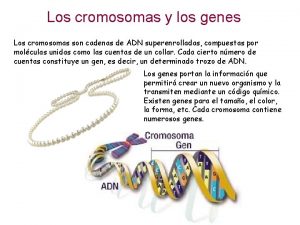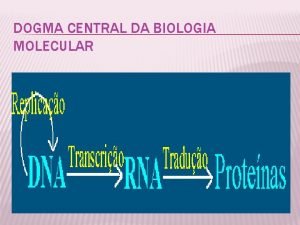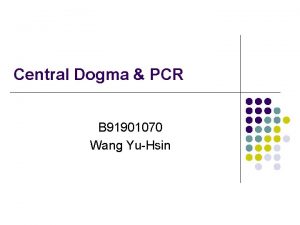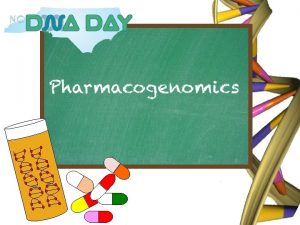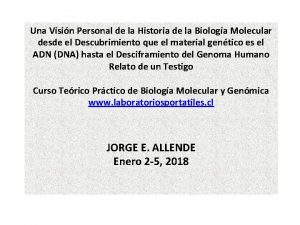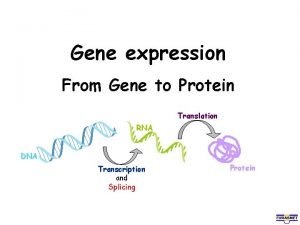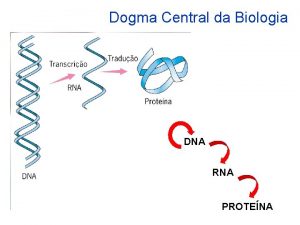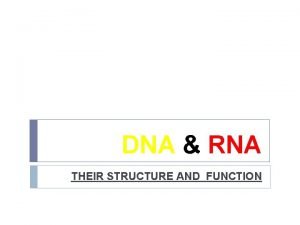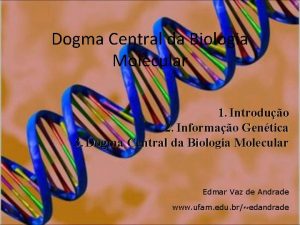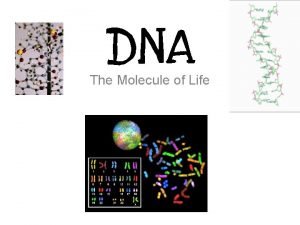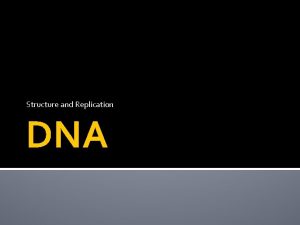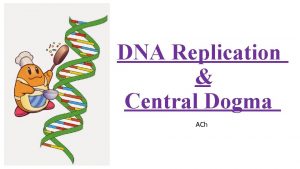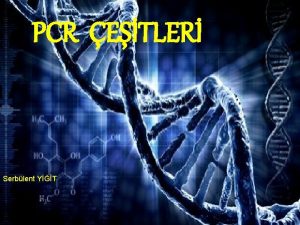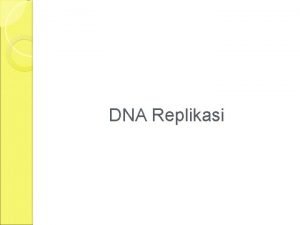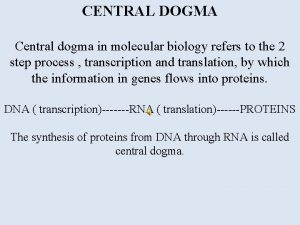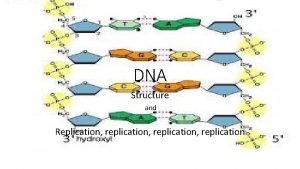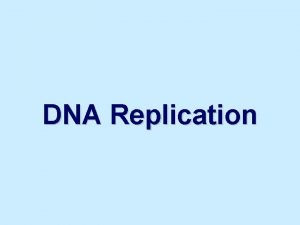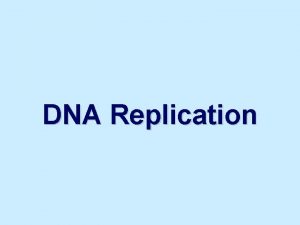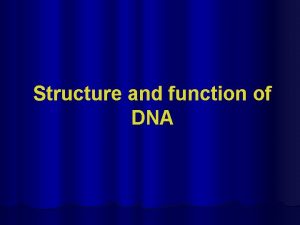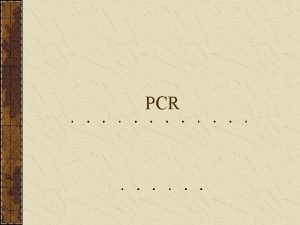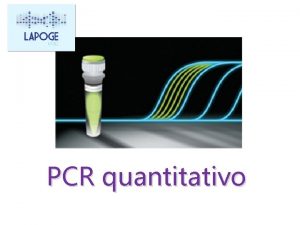DNA Replication and PCR Central Dogma DNA structure





























- Slides: 29

DNA Replication and PCR

Central Dogma


DNA structure

nucleotides

Pentose (5 Carbon) sugar

phosphate At physiological p. H phosphate group is charged ? ? What implications does this have for DNA molecules?

Bases purines pyrimidines

How are DNA monomers put together Phosphodiester bond what type of bond is this? covalent

What holds helices together ? Hydrogen bonds

What has fallen apart? + DNA = + Boiling water = Denaturation hydrogen bonding is disrupted

Concepts What do you need to know? • How does DNA polymerase work • Concept of molecular machines

How does DNA polymerase work? • DNA polymerase can only extend preexisting molecules • DNA polymerase can move only in direction: 5’ 3’

How does DNA polymerase work?

Will this system make DNA? d. ATP d. GTP d. CTP d. TTP

Will this system make DNA? d. ATP d. GTP d. CTP d. TTP

Will this system make DNA? d. ATP d. GTP d. CTP d. TTP

Will this system make DNA? yes d. ATP d. GTP d. CTP d. TTP

DNA polymerase can move only in direction: 5’ 3’ d. ATP d. GTP d. CTP d. TTP

DNA polymerase can move only in direction: 5’ 3’ 3’ 5’ d. ATP d. GTP d. CTP d. TTP

Molecular Machinery

d. NTPS vs NTPs

Inventor Kary B. Mullis Nobel in Chemistry in 1993 Process for Amplifying Nucleic Acid Sequences Polymerase Chain Reaction Patent Number(s) 4, 683, 202

Polymerase chain reaction (PCR) a special case of DNA replication in vitro thermocycler

Template DNA polymerase primers unwind DNA d. NTPs, Magnesium, proper p. H and salt

In vitro equivalents • • • Template DNA helicase d. NTPs Mg++ buffer ( salt, p. H) • polymerase • • • Template DNA heat (95 o. C) d. NTPs Mg. Cl 2 buffer ( salt, p. H) Taq polymerase

Taq polymerase Heat stable Taq: Thermus aquaticus

Polymerase Chain Reaction

ALU Insertion Chromosome 16 Alu is an example of a so-called "jumping gene" – a transposable DNA sequence that "reproduces" by copying itself and inserting into new chromosome locations. : v First, the inserted Alu is transcribed into messenger RNA by the cellular RNA polymerase. v Then, the m. RNA is converted to a double-stranded DNA molecule by reverse transcriptase. v Finally, the DNA copy of Alu is integrated into a new chromosomal locus at the site of a single- or double-stranded break.
 Bioflix activity dna replication dna replication diagram
Bioflix activity dna replication dna replication diagram Dna replication vs pcr
Dna replication vs pcr Que es
Que es Dna rna protein central dogma
Dna rna protein central dogma Central dogma
Central dogma Dna central dogma
Dna central dogma Dna polymerase function in dna replication
Dna polymerase function in dna replication Dna and genes chapter 11
Dna and genes chapter 11 Dna structure and replication pogil
Dna structure and replication pogil Multiple choice questions on dna structure and replication
Multiple choice questions on dna structure and replication Dna structure and replication
Dna structure and replication Protein synthesis
Protein synthesis Whats the central dogma of biology
Whats the central dogma of biology Central dogma
Central dogma Central dogma
Central dogma Central dogma cartoon
Central dogma cartoon Central dogma
Central dogma Dogma central
Dogma central Dogma central
Dogma central Central dogma
Central dogma Antidepressant side effects
Antidepressant side effects Oswald avery descubrimiento
Oswald avery descubrimiento Replicacion
Replicacion Replication transcription translation
Replication transcription translation Central dogma of biology
Central dogma of biology Biologia
Biologia Central dogma diagram
Central dogma diagram Dogma central da biologia
Dogma central da biologia Dna replication transcription and translation
Dna replication transcription and translation Dna stand for
Dna stand for

